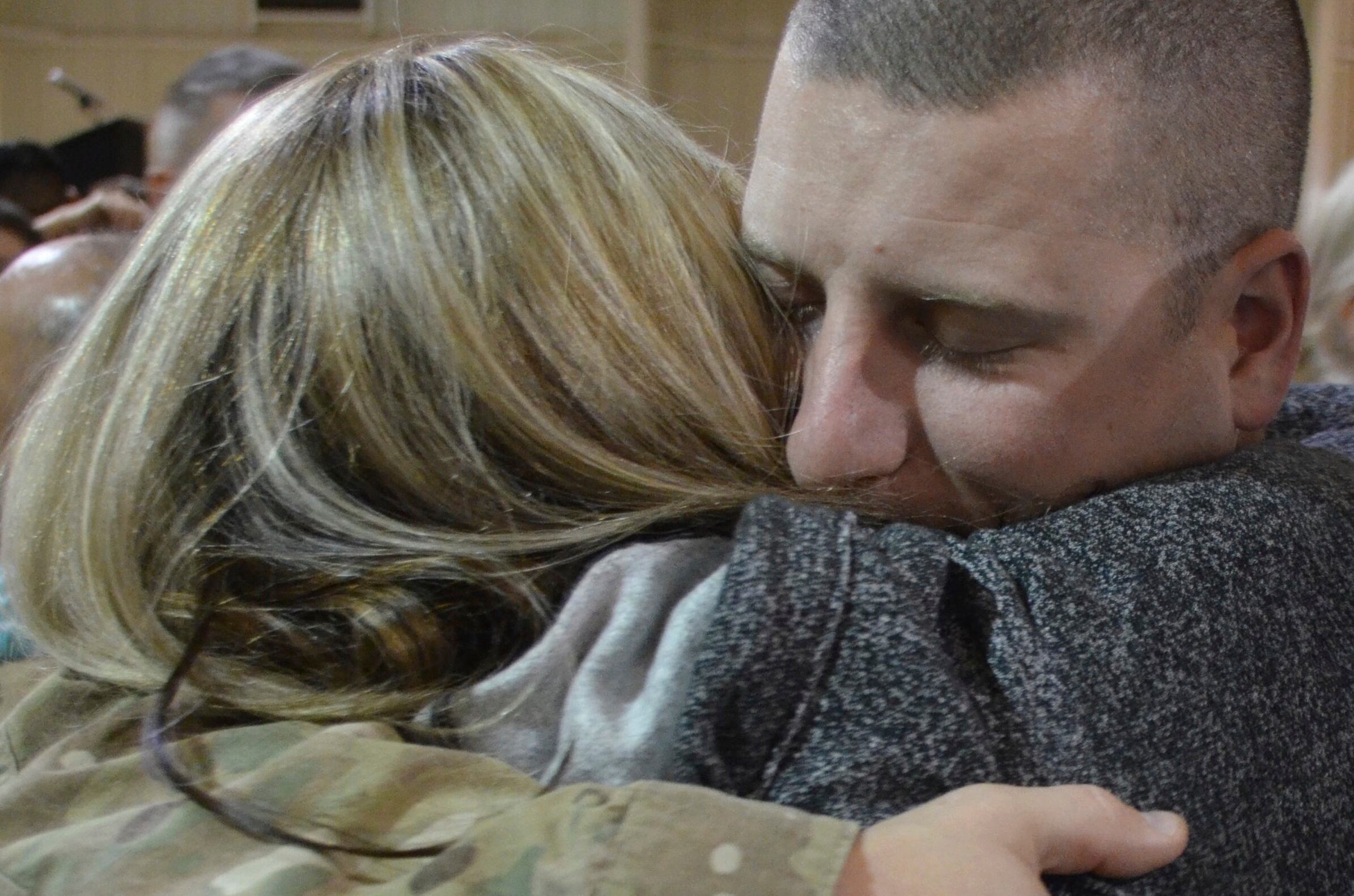The Army is rebooting its family readiness groups to make a shift “from a spouse group or spouse program to a commander’s program for soldier and family readiness,” according to the chief of the Army’s family programs branch.
Commanders will be able to shape the group into what their soldiers and families need, said Col. Steve Lewis, speaking at a family forum Oct. 14 during the annual meeting of the Association of the United States Army.
In April, then-Secretary of the Army Mark Esper issued a memorandum that changed the name of the family readiness group to soldier and family readiness group. Among other things, it also eases some of the reporting restrictions and requirements of these groups.
Family readiness groups were created after the first Gulf War when leaders and families called for more structure in family support. This is the first major change these groups have had since then. Esper’s memo notes that changing the name reflects more inclusive groups to also bring in single soldiers and their families, into the communication activities and community network of the SFRG.
“The commander needs to lead the soldier and family readiness group,” said Lewis. “They need to be able to link all these family members in the unit and the soldiers in the unit into one, and be able to continue to communicate with them and connect them to services and support that’s available."
Army officials are currently drafting implementation guidance for commanders, Lewis said.
An Army Stand-To message states the policy update “is a paradigm shift away from a focus on social activities and fundraising to communicating, connecting members, information sharing, and connecting people with resources.”
Connection and communication is a core task of these redefined groups, Lewis said. “Social support and connectedness are critical for family readiness.” According to a recent Rand Corp. study, Army junior enlisted family members as well as family members who live farther from installations, are most likely to feel stressed, isolated and bored. And because of low spouse participation in family readiness groups, the Army should find ways to boost the effectiveness and increase participation in them, to improve communication and provide more opportunities for social support and information sharing.
It will likely require a “reboot” of the whole FRG program, the researchers said, in the Oct. 7 report.
RELATED

Lewis said Army officials are building the soldier and family readiness group concept, “to take it way from just a fundraising entity to something that is really connecting people," with commanders using all the resources available to them, such as social media and email.
He noted that troops in the 18- to 24-year-old age range spend up to three hours a day on social media, so they’re connected. But they’re connected to family and friends they had before coming into the Army. The Army wants to tether them into the Army family and Army community, to support them by providing them the resources and help they need, Lewis said.
There are thousands of agencies on and off installations that can be resources for these families, he said, locally, regionally and nationally. The foundation of soldier and family readiness “really begins with commanders establishing a strong soldier and family readiness group, so they can routinely, effectively communicate with those families” he said.
Asked what kind of training will be provided to commanders, especially at the company level, Lewis said officials are working with the Army’s Training and Doctrine Command, which runs the company commander and first sergeant curriculum, to begin to develop content that reinforces the soldier and family readiness group and the changes, to “ensure we build this right for them.”
But these commanders and command teams already using core leadership elements “in building lethal combat teams," he said. "Creating that sense of purpose and focus.. are the same skills they can apply across the organization to the family members and to all the soldiers.”
Family program officials are also working with public affairs and social media experts to ensure officials give commanders the best information on how to use social media to connect and communicate with family members, he said.
Karen has covered military families, quality of life and consumer issues for Military Times for more than 30 years, and is co-author of a chapter on media coverage of military families in the book "A Battle Plan for Supporting Military Families." She previously worked for newspapers in Guam, Norfolk, Jacksonville, Fla., and Athens, Ga.





